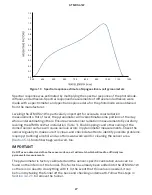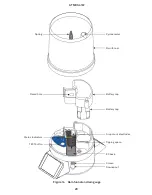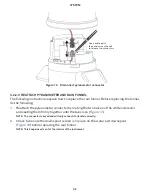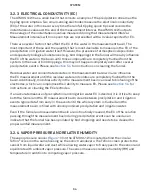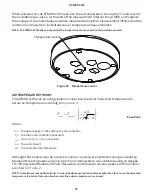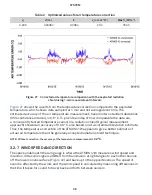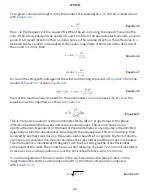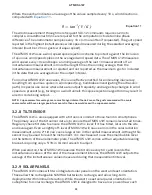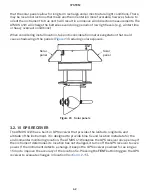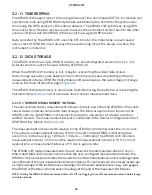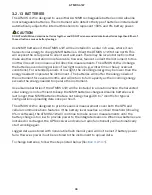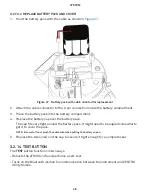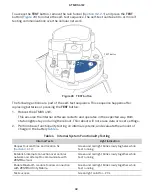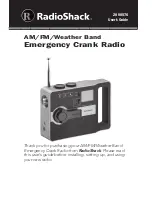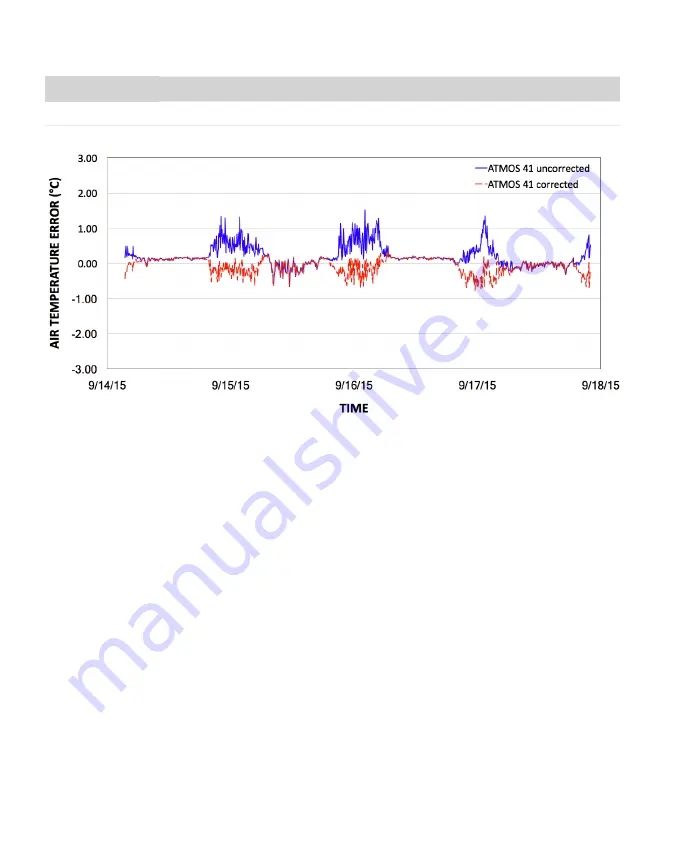
38
SYSTEM
Table 2 Optimized values for air temperature correction
a
s
d
(m)
k
c
p
(J mol
–1
K
–1
)
Max
S
t
(W/m
2
)
0.295
0.00083
0.0984
29.3
352.3
Figure 21 Corrected air temperature comparison with the aspirated radiation
shield using 1-min measurement intervals
shows the results from the temperature correction compared to the aspirated
temperature, which shows data sampled at 1 min and not averaged over time. The
estimated accuracy of the air temperature measurement, based on two standard deviations
(95% confidence interval), is 0.6 °C. To provide an idea of how comparable the data are,
a concurrently tested temperature sensor in a radiation shield (typical measurement
approach) showed an accuracy of 0.66 °C, also based on a two-standard deviation estimate.
Thus, the temperature correction of the ATMOS 41W appears to give a better estimate of
actual air temperature than the generally accepted radiation shield technique.
NOTE: Without correction, the accuracy of the temperature measurement is
±2 °C.
3.2.7 WIND SPEED AND DIRECTION
The space underneath the rain gauge is where the ATMOS 41W measures wind speed and
direction. Ultrasonic signals emitted from transducers at right angles to each other bounce
off the lower convex surface (
) and back up to the opposite sensor. The speed of
sound is affected by the wind, and the wind speed is calculated by measuring differences in
the time it takes for sound to travel back and forth between sensors.




